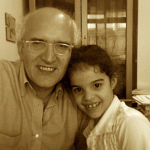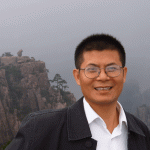Here is a selection of author profiles from the April issue of NJC. The editorial team would like to warmly thank them for accepting the invitation, giving us the opportunity to know some of our fellow chemists a little better.
Our first author is Professor Helena Grennberg, who is based at the faculty of Uppsala University (Sweden). Her current research interests are mainly focused on the chemistry of carbon allotropes (C60, nanotubes, graphene).

In her NJC paper, Helena and coworkers report on the stirring-induced aggregation of graphene in suspension that leads to folding/scrolling and reversible agglomeration (capture) of thin flakes. Such a solution-based process could be useful for the preparation of graphene-containing thin films and composites.
The broad scope of NJC, yet with the correct topical focus for carbon allotrope chemistry, was Helena’s motivation behind her submission to the journal.
Outside of the lab, Helena enjoys skiing and orienteering. “But my family is top priority, including ‘mom’s taxi’ to all the activities my children take part in”. When asked for an alternative career path if not a scientist, “Designer? Chef?”, said Helena, immediately adding, “being a scientist, in particular an experimental organic chemist comprises both and much more, it is the best I can think of!”
Stirring-induced aggregation of graphene in suspension by Wenzhi Yang, Erika Widenkvist, Ulf Jansson and Helena Grennberg, New J. Chem., 2011, 35, 780–783; DOI: 10.1039/c0nj00968.
Sebastiano Campagna is Professor of Physical Chemistry at the University of Messina, Italy. He is currently working in the fields of photochemistry and photophysics of supramolecular systems, photoinduced electron and energy transfer, artificial photosynthesis, and molecular logics. His paper is the fruit of a collaboration with Raymond Ziessel, working in the University of Strasbourg, a well-known specialist in fluorescent Bodipy dyes. They report on a hybrid bodipy-bipyridine dye that features part of the properties of D-latch circuits by integrating two logic gates, a NOR and an INHIBIT gate, with both gates sharing the same inputs.

“We submitted this work to NJC because of the high quality of the articles published in the journal, its large diffusion and multidisciplinary nature which guarantees for a broad an diverse readership.”
Playing guitar and travelling with his daughter are Sebastiano’s favorite activities. If he could not be a scientist, he would be a musician or a novel writer.
Molecular logics: a mixed bodipy–bipyridine dye behaving as a concealable molecular switch by Fausto Puntoriero, Francesco Nastasi, Thomas Bura, Raymond Ziessel, Sebastiano Campagna, and Antonino Giannetto, New J. Chem., 2011, 35, 948-952; DOI: 10.1039/c0nj00770
The next author is Gui Yin, Associate Professor at the Key Laboratory of Analytical Chemistry for Life Science, Ministry of Education of China, School of Chemistry & Chemical Engineering, Nanjing University. His research group is currently working on photoelectric materials, carbon materials chemistry and synthesis of various chemosensors for heavy transition metal ions. In collaboration with research groups from the School of Electronic Science and Engineering and the School of Physics in the same University, this NJC paper describes a new organic molecule based on pyrene, which shows remarkable fluorescence turn-on behavior towards Ag+. The very low detection limit obtained with this system complies with the standards of US EPA and World Health Organization (WHO) for drinking water.

“NJC is our preferred journal because of its high quality and wide readership. During the submission process, the fast publishing time and high efficiency gave me a deep impression.”
Outside the lab, Gui appreciates reading Chinese ancient poetry. He also spends plenty of time staying with his family and they often go on a trip together. Because Gui enjoys very much the delight of the peaceful country life, if he had another choice, he would like to be a writer or farmer.
Fancy submitting an article to NJC? Then why not submit to us today or alternatively email us your suggestions.










